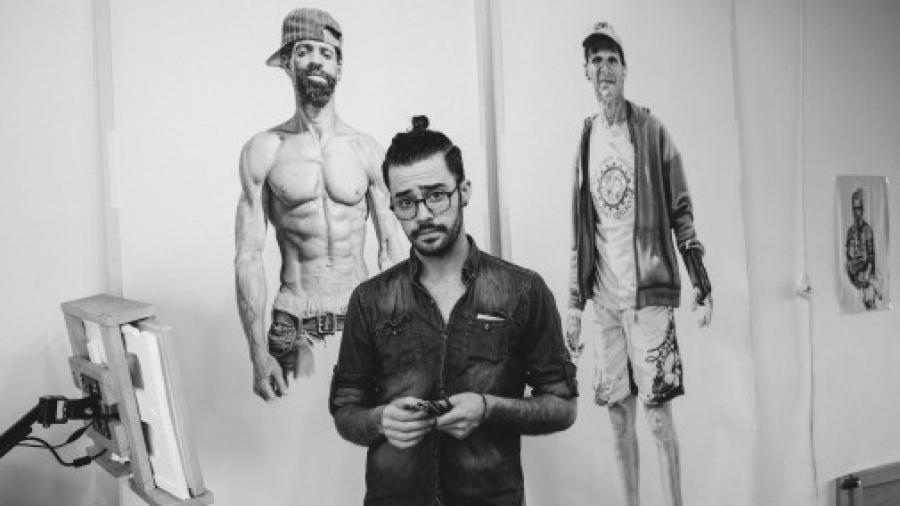Westmont Magazine Portraits Reveal Inner-City Stories

With the tip of a pencil and a piece of charcoal, Joel Daniel Phillips ’11 tells stories about people. His monumental drawings depict inhabitants of a blighted San Francisco neighborhood, shedding light on the overlooked and unidentified. For three years, he walked outside his studio and home in a former factory and asked to photograph neighbors he met on the corner of Sixth and Mission. He turns those images into revealing, life-sized graphite and charcoal portraits.
“Most people avoid that corner with its visual deficits and detritus,” he says. “Homelessness, drug addiction and poverty are more visible there than in most cities.” But Joel entered the community he found. “At first, people asked me, ‘What do you want? What will you do with the photos?’ I soon became known as the guy who draws people. Four years later, I’ve made a lot of good friends.”
Today he lives in Oakland, part of the artist exodus from over-priced San Francisco. He shares a studio and living space in an old cannery, with BART trains constantly zooming by the window. “It’s idyllic after San Francisco,” he says. “But I’m separated from the inspiration and social fabric of that corner. I’m looking at it from the outside.” To reconnect with the neighborhood, he has to rent a room with just a sink and see how long he can stand it.
Joel worked for two years without selling a single piece, supporting himself with graphic design. Then the gallery that became Hashimoto Contemporary accepted his art, and it all sold in two months. His shows now sell out. “It’s hard to keep anything in stock,” he says.
His work has appeared in group exhibitions in San Francisco, Los Angeles, Austin, New York, Miami and the Westmont Ridley-Tree Museum of Art as well as in two solo shows, “No Regrets in Life” at Satellite 66 in San Francisco in 2012 and “I Am Another Yourself” in 2014 at Hashimoto Contemporary.
A printmaking class led Joel to switch his major from English to art. “Tony Askew pulled me aside and told me I had to do art,” he says. “It was one of those moments that change everything.” Joel focused on graphic design, a sensible direction his father supported. But he discovered drawing during a semester at the New York Center for Art and Media Studies. “Someone gave me charcoal nubs and suggested I draw people,” he says. “I hadn’t spent much time drawing before, but I felt it was what I was supposed to do.”
His senior art project at Westmont featured four, full-length charcoal portraits: his father and his brother, both attorneys, and himself and his uncle, both artists. “It was my way of telling my dad what I planned to do,” he says.
Joel works diligently on his craft. “I thought my original drawings were amazing,” he says. “But after 8,000 hours of drawing, I realize I’m not anywhere near where I want to be.” Spending up to 100 hours a week in the studio has him seeking some balance in his life. He spends all his time either working or spending time with fellow artists. But he appreciates these new friends. “I finally feel like I have a community for the first time since leaving Westmont,” he says.